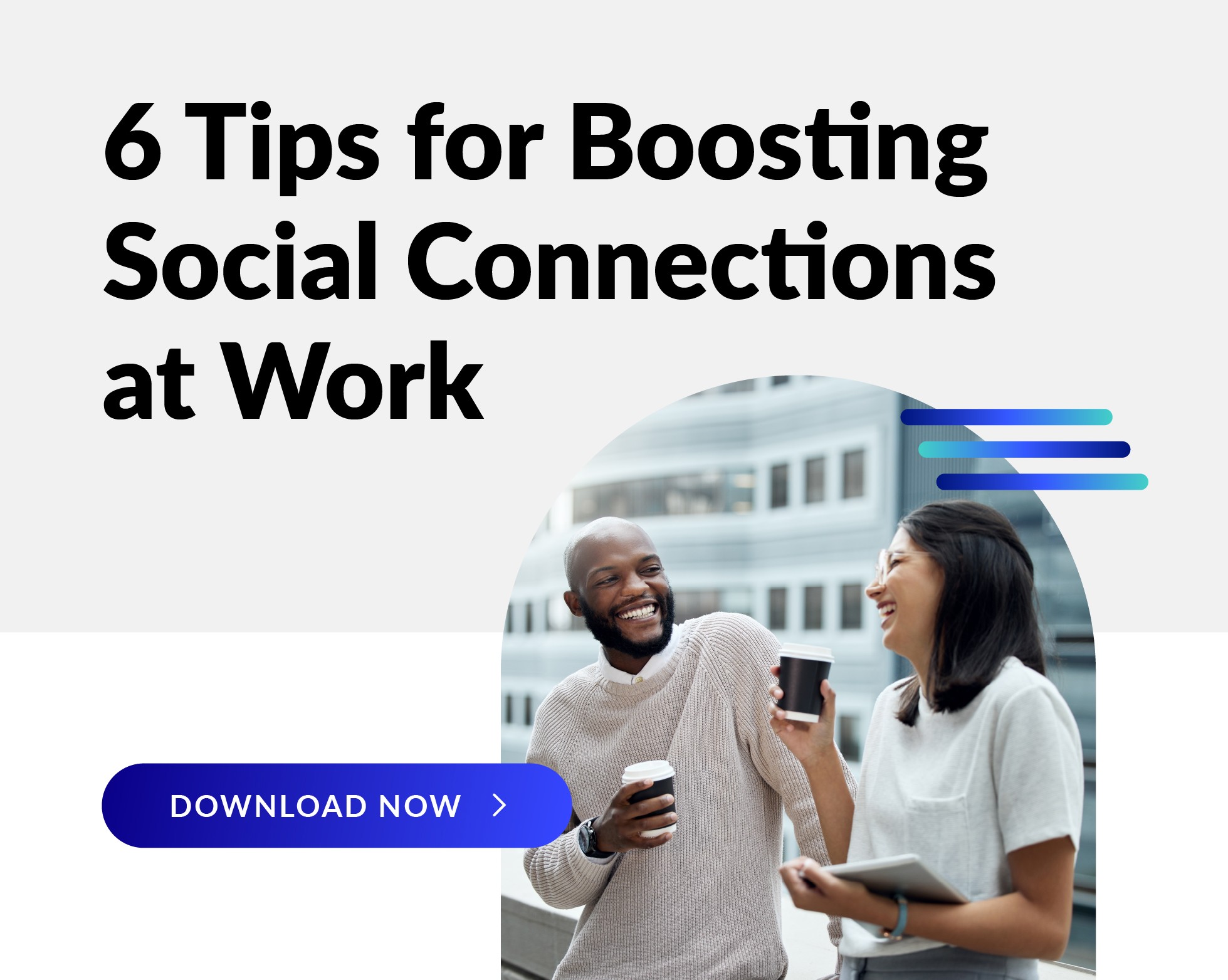 Last February, our WebMD whitepaper How Well-Being Programs Are Failing Women and Millennials discussed the lack of a universal parental leave policy and other family-friendly benefits in the U.S. and its effect on employee well-being. Fast forward six months, and we are in the midst of a pandemic where the absence of good childcare options is creating unprecedented stress for working families. In this blog, we explore the state of parental leave and childcare—and how employers and workers are responding to the current crisis.
Last February, our WebMD whitepaper How Well-Being Programs Are Failing Women and Millennials discussed the lack of a universal parental leave policy and other family-friendly benefits in the U.S. and its effect on employee well-being. Fast forward six months, and we are in the midst of a pandemic where the absence of good childcare options is creating unprecedented stress for working families. In this blog, we explore the state of parental leave and childcare—and how employers and workers are responding to the current crisis.
The U.S. is the only country that does not have a mandatory paid parental leave benefit.
While some states, like California, New Jersey, New York, Rhode Island, and the District of Columbia have state-mandated paid leave plans, there is no federal mandate, aside from federal workers who now receive 12 weeks of paid parental leave. In comparison, Swedish parents are entitled to 16 months of paid parental leave at 80% of their salary; Norwegian parents can take 44 weeks of fully-paid leave.1
About 30% of companies in the U.S. do offer paid leave to employees, according to the Society for Human Resources 2019 Employee Benefits Survey. However, it’s typically highly educated, salaried, white-collar professionals who benefit. This means that parental leave is more of a privilege to be enjoyed by some, but not all, especially low-wage and service workers.
Paid parental leave benefits the employee and the employer.
New parents who can take advantage of parental leave policies may benefit from a range of wellness support, including better mental health, less stress, more gender equity in the workplace, and significantly fewer financial repercussions of taking time off. And these benefits don’t just help the employee—they help the organization, too. Employers that create robust parental leave policies can see many advantages, such as increasing retention, attracting new talent, and improving employee satisfaction. What’s more, those companies who offer quality packages can help to create a “destination culture,” where prospective employees who desire family-friendly benefits seek out certain employers who provide them.
Childcare challenges continue in the early childhood years.
Even if an employer offers a generous parental leave policy, the challenge of finding quality, affordable childcare looms when it’s time to return to work. This is in part because childcare in the U.S. is “still largely seen as a personalized service instead of a public good,” reliant on parents paying fees to private providers.2
Childcare is incredibly expensive. An article from The Atlantic states that the average cost of a full-time childcare program in the U.S. is now $16,000 a year and that the typical family paying for any childcare spends about 10% of their income on it. Other studies put that figure at about 30% of income.
While 44 states now have a public Pre-K program for 4-year-olds, a recent New York Times article states that among 37 developed nations, the United States ranks the third lowest in spending on the early years of care and education, according to 2015 data from the Organization for Economic Co-operation and Development.
Yet neuroscientists and psychologists agree that the years between 0 and 5 are crucial for the development of critical skills like logic and language. Early education also has profound effects on both cognitive skills and “noncognitive” skills, such as grit, teamwork, and emotional health.3 So, for families who don’t have the means to secure high-quality childcare, the result is that their children often enter kindergarten less prepared than peers.
The combination of a lack of publicly-sponsored programs and the high cost, unfortunately, forces some parents to stop working altogether—and statistics show it is typically the female in a heterosexual relationship who opts out. As we discussed in our whitepaper, this sets women up for a lifetime of reduced earnings, less Social Security at retirement, and the inability to contribute to a 401(k).
COVID-19 is now testing the limits of our already strained childcare situation—especially for women and minorities.
When schools closed in March due to the coronavirus, parents suddenly needed to find ways to both work from home and home-school their children. For essential workers without the luxury of working from home, this was even more difficult. The federal government passed the Families First Coronavirus Response Act, which provides two weeks off to care for a child and up to an additional ten weeks of paid expanded family and medical leave at two-thirds the employee’s regular rate of pay. But, with many schools unlikely to have in-person education this fall, these benefits are a drop in the bucket.
Some employers and parents are getting creative, but will it be enough?
According to the Society for Human Resource Management’s recent research, among companies that have already had their employees return to the office, 42% do not have a dedicated plan to help employees balance childcare responsibilities. And only 32% of organizations that are planning to return to work have outlined childcare plans.4
To be fair, many employers are taking steps to alleviate some of the stress by accommodating flexible work schedules and allowing a reduction in work hours. While onsite daycare was once a great perk, companies who offer in-home childcare—such as those who are partnering with companies like care.com—are now the heroes.
Some parents are taking matters into their own hands. Early on in the pandemic, dual-career households reported splitting the day into shifts to allow one parent to focus on work while the other took care of the children. Now, parents are banding together in pods, a group of households that can safely gather, hire a teacher and split the cost. Forming these pods will contribute to the widening gap between those who can afford specialized, focused care, and those who can’t, leading to even more disparities in education.
Sadly, as is the case for many new mothers, some women may decide the juggling of work and home-schooling isn’t worth it, and opt out of the workforce altogether. A recent study by Cleo found that in June, 33% (1 in 3) of those surveyed report having at least one parent that has either left the workforce or dropped down to part-time, most likely the female parent/mother (70% of the time). Studies show that women who drop out of the workforce to take care of children often have trouble getting back in, and the longer they stay out, the harder it becomes.5
Coronavirus has also highlighted the racial and economic disparities in childcare. Black and multiracial families tend to experience more childcare hardships because they typically have less access to remote work and job flexibility, according to the Center for American Progress. As the article How Child Care Disruptions Hurt Parents of Color Most discusses, “without immediate action to bolster child care, too many parents of color will be forced to choose between putting food on the table and providing their children with the close supervision and enrichment they need.”
One of the takeaways from our February whitepaper was that it is in an employers’ best interest to create a work culture that normalizes and values caregiving as a necessary part of life, and not something that needs to be “balanced” with work. Now it seems that’s no longer an option, but rather a necessity to weather the pandemic successfully. The hope is that changes instituted to accommodate this moment will lead to lasting changes in how organizations support childcare in the future—from paid parental leave to the long-term commitments of raising a family.
Related Content:
- Whitepaper: How Well-Being Programs Are Failing Women and Millennials
- Webinar: How Workplace Well-Being Programs Are Failing Women and Millennials
- Blog: Checking Up on Women’s Well-Being
- Blog: The Challenges of Modern-Day Caregiving: How Employers Can Help

